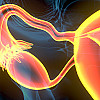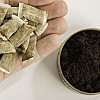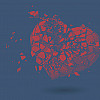Recent Blog Articles

Lead poisoning: What parents should know and do

How does waiting on prostate cancer treatment affect survival?

Does running cause arthritis?

Is alcohol and weight loss surgery a risky combination?

Preventing ovarian cancer: Should women consider removing fallopian tubes?

Healthier planet, healthier people

Is snuff really safer than smoking?

Will miscarriage care remain available?

Considering collagen drinks and supplements?

Does less TV time lower your risk for dementia?
Tinea Versicolor
What Is It?
Many microorganisms normally live on our skin, including a group of yeast species called Malassezia. (Round or oval yeasts in this group were previously known by the names Pityrosporum orbiculare and Pityrosporum ovalis.) The yeast lives in our pores. Under certain conditions, it can shift its form from a round or oval yeast shape to a string-like, branching shape. These branching forms are named hyphae. The yeast can migrate under the skin and produce azelaic acid, a substance that can change the amount of pigment (color) in new skin cells. In its hyphae form, the yeast causes a rash called tinea versicolor, also called pityriasis versicolor.
Tinea versicolor is common year-round in the tropics and subtropics and is seen in the summer months in more temperate climates. Sun exposure, use of oils on the skin, naturally oily skin and sweating are all suspected to be triggers that can cause the round or oval yeast to convert to its hyphae form, resulting in the rash. This rash can spread between people who have skin contact.
To continue reading this article, you must log in.
Subscribe to Harvard Health Online for immediate access to health news and information from Harvard Medical School.
- Research health conditions
- Check your symptoms
- Prepare for a doctor's visit or test
- Find the best treatments and procedures for you
- Explore options for better nutrition and exercise
I'd like to receive access to Harvard Health Online for only $4.99 a month.
Sign Me UpAlready a member? Login ».
Disclaimer:
As a service to our readers, Harvard Health Publishing provides access to our library of archived content. Please note the date of last review or update on all articles.
No content on this site, regardless of date, should ever be used as a substitute for direct medical advice from your doctor or other qualified clinician.
Free Healthbeat Signup
Get the latest in health news delivered to your inbox!
